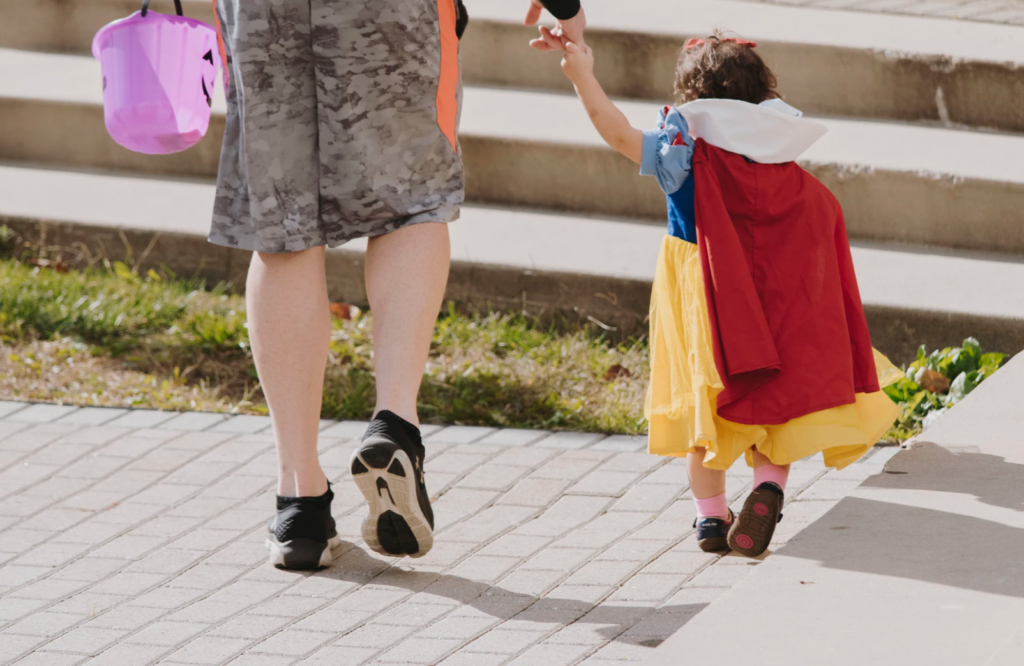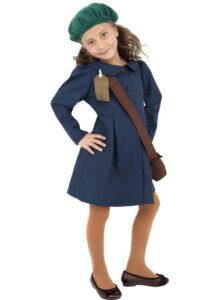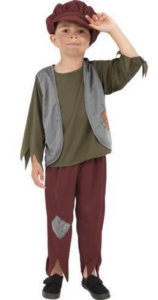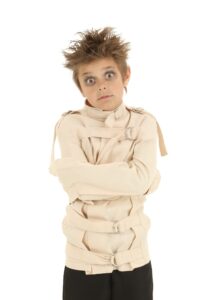Don’t get tricked into exclusivity this Halloween

It’s hard to find something to look forward to during the current pandemic, but October brings Halloween and along with it the opportunity for some (socially distanced) fun. While the ghosts, goblins, and zombies roam the streets shrieking about candy and scary decorations, Halloween can be an extremely challenging time for many kids.
As we all continue our journeys around diversity and inclusion, have you stopped to think about how you’re going to make this Halloween inclusive for kids of all ages, races, ethnicities, gender identities, abilities, experiences, and more? The truth is, there are many aspects of Halloween that can be quite exclusive. Here we’ve outlined a few things to keep in mind as we all attempt to make this Halloween fun and safe for everyone.
Halloween Costumes
Cultural Appropriation, A Perennial Issue on Halloween, America Can’t Seem to Kick Its Racist Costume Habit, 15 Offensive Halloween Costumes That Shouldn’t Exist… These headlines from National Public Radio, The Atlantic, and Good Housekeeping are nothing new. Over the last several years, the appropriateness and inappropriateness of certain Halloween costumes has been a common topic in the media.
The most common exclusionary costumes relate to cultural appropriation. Think Indigenous American costumes, fiesta costumes, costumes that include dreadlocks or bindis… These blatant examples of appropriation have led to the widespread use of hashtags on social media including #notyourcostume and #mycultureisnotyourcostume.
While college campuses (including Brigham Young University and University of Louisville) have come under the most fire for these transgressions, children’s costumes can also be quite exclusionary. Take for example, Pocahontas or Moana costumes. Although a seemingly innocent desire to be a princess, some perceive it as controversial to “dress up” as a person of another culture. Hence, a series of recently published articles from People, USA Today, and CBC, noting problematic to pretend to be in the shoes of a person whose day-to-day experiences are vastly different from your own.
Inappropriate costumes aren’t limited to race and ethnicity. Other costumes that have recently been criticized are those of Anne Frank, a homeless person, a “psycho,” and so on (see images below). These are problematic in that they trivialize someone’s experience with trauma, homelessness, and mental illness. As a general rule, any costume that pokes fun at or minimizes a person’s lived experiences, should be avoided.



So what are some appropriate costumes? Well – anything that doesn’t poke fun at a person’s identity or make someone relive a traumatic experience. Some great options include Spider-man, a butterfly, a cup of coffee, or Waldo from Where’s Waldo.
Sensory Sensitivity
Fake spider webs, fog machines, loud noises, pumpkin guts, and spooky lights. These are all hallmarks of a wicked Halloween set up. However, these are also triggers for children with sensory processing issues. Cobwebs and fog can bother kids with tactile sensitivities while pumpkin guts can bother kids with olfactory sensitivities. These kids may have a difficult time with trick-or-treating, melting down or staying silent when faced with an open door and strangers expecting a “trick-or-treat!” greeting. In turn, some adults may perceive these children as rude or aloof and unthankful for the treats given. However, as much as the child may love and welcome the treat, they may be unable to properly express thanks in the moment. Consideration and patience of children’s differences can go a long way.
A few tips for parents of children with sensory sensitivities:
- Ensure your child touches their costume in the store prior to purchasing and have your child practice wearing the full costume before Halloween.
- Agree on a code word or signal that the child can use if they get overwhelmed trick-or-treating and always honor it.
- Prepare your child for Halloween by having an in-depth discussion on what to expect. Recognize that the rules of Halloween go against many daily safety rules such as stranger danger.
- Expose your child to different decorations prior to Halloween so that they can adjust to the different sights, sounds, and smells. This will also give your child an idea of what decorations they want to avoid on Halloween.
- Create new Halloween traditions! If your child isn’t a fan of trick-or-treating, opt for a movie marathon, board game night, or candy swap with a close group of friends. There are plenty of ways to get in the Halloween spirit without participating in stereotypical traditions.
Between offensive costumes and overly festive decorations, many people participate in exclusionary activities on Halloween without realization. However, we hope that this blog helps educate you and your family on ways to improve your inclusivity on Halloween. By simply taking other’s experiences and feelings into consideration, we can make sure Halloween is a fun and respectful holiday for everyone.
For more tips on building inclusive environments, check out our Say This, Not That whitepaper on inclusive language.
Resources:
https://www.parentmap.com/article/halloween-sensory-sensitive-kids
https://blog.brainbalancecenters.com/2012/10/halloween-tips-for-special-needs-kids






